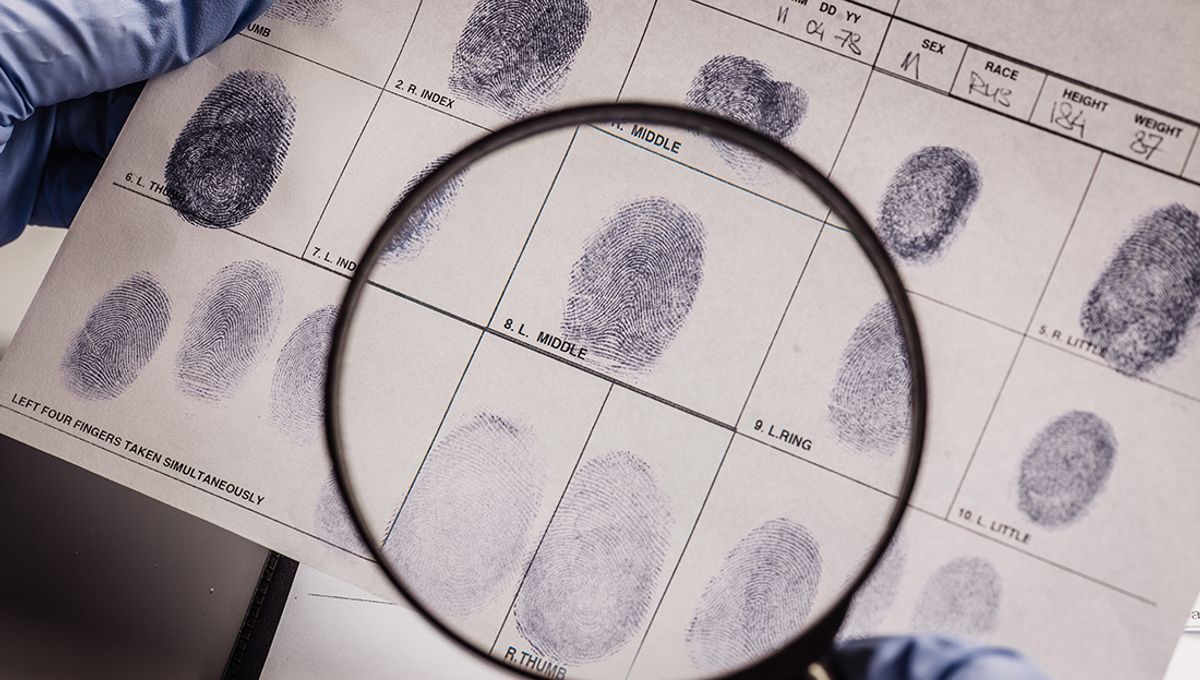
Fingerprint analysis is considered an invaluable tool in forensic and security settings due to the uniqueness and permanence of the patterns. No two people have been found to share a fingerprint pattern, not even identical twins. Fingerprints are so unique, in fact, that your own fingerprints don’t even match each other. But now, new research using artificial intelligence (AI) is making claims that could change the course of forensic fingerprint identification.
While the uniqueness of fingerprints is what makes them so crucial in crime scene investigations, the inability to match the fingerprints of different fingers from the same person – referred to as intra-person fingerprints – can cause major issues in connecting forensic evidence.
However, researchers from Columbia University are claiming to have created an AI model capable of matching intra-person fingerprints with 99.99 percent confidence, arguing that the fingerprints of the same person are not unique – we’ve just been comparing them the wrong way.
Fingerprint patterns are made up of raised ridges and recessed furrows on the finger pads. Currently, fingerprints are analyzed by comparing friction ridge patterns which fall into three categories – loops, whorls, and arches. An analyst will use ridge characteristics, known as minutiae, to identify and compare the characteristics of the print.
The new AI’s decision-making process, however, is based on analysis of binary patterns, ridge orientation, ridge density, and minutiae. By analyzing the swirls and loops near the center of the fingerprint, known as the singularity, they found that most of the intra-person fingerprint similarities were explained by ridge orientation, concluding that the minutiae maps were the least reliable of the analysis categories.
They argue that while minutiae analysis may be the most accurate for same-finger matching, it focuses on single fingerprint peculiarities that are unlikely to occur across intra-person fingerprints, making it less accurate for cross-finger matching.
The model was trained using a public US government database of roughly 60,000 fingerprints and 525,000 images. They found that the AI’s performance was consistent across different genders and racial groups and that it performed best when trained with samples from all groups. “Just imagine how well this will perform once it’s trained on millions, instead of thousands of fingerprints,” Columbia Engineering senior Aniv Ray, who helped analyze the data, said in a statement.
The team highlighted their hope that this AI model could one day be used to prioritize leads, exonerate innocent suspects, and potentially help create new leads for cold cases.
“This research is an example of how even a fairly simple AI, given a fairly plain dataset that the research community has had lying around for years, can provide insights that have eluded experts for decades,” said Hod Lipson, fellow author and professor at Columbia Engineering.
“Even more exciting is the fact that an undergraduate student, with no background in forensics whatsoever, can use AI to successfully challenge a widely held belief of an entire field. We are about to experience an explosion of AI-led scientific discovery by non-experts, and the expert community, including academia, needs to get ready.”
The research, however, has not come without criticism. The paper was initially rejected by a well-established forensics journal with an anonymous expert reviewer and editor concluding that “it is well known that every fingerprint is unique,” and it would not be possible to detect intra-person similarities.
While the paper acknowledges the need for the model to be trained on a larger and more diverse dataset, it remains to be seen if AI is capable of producing results reliable enough to provide conclusive evidence in criminal convictions.
The study is published in Science Advances.
Source Link: AI Overturns Claim That Every Human Fingerprint Is Unique – Maybe